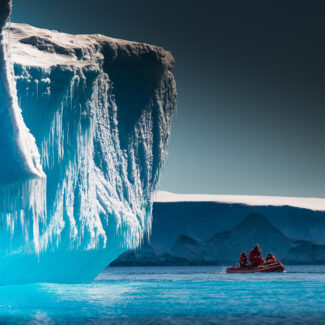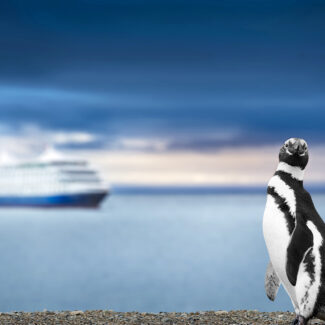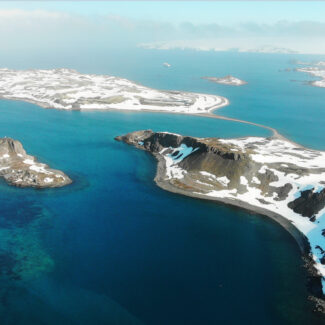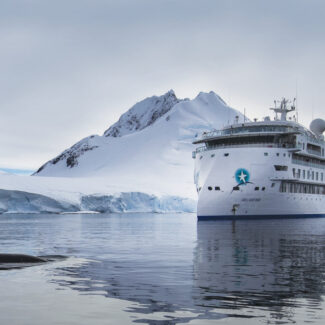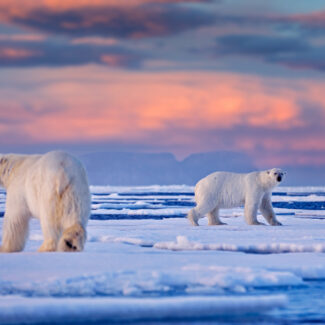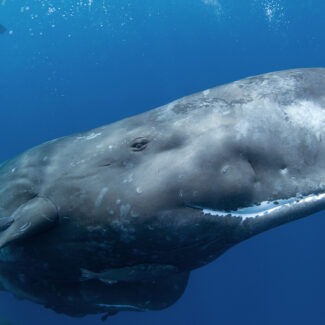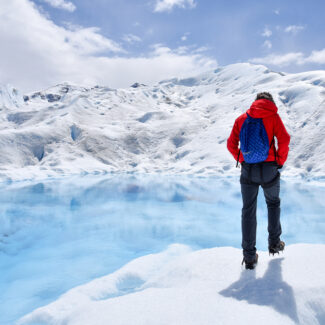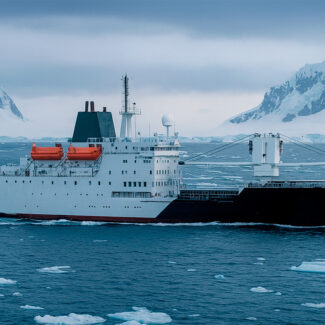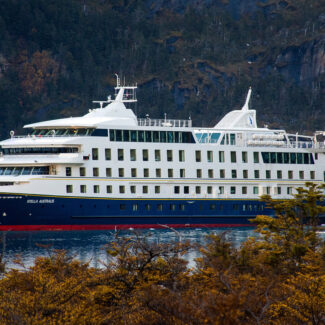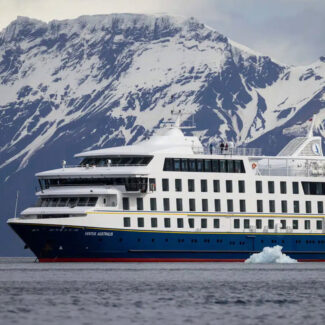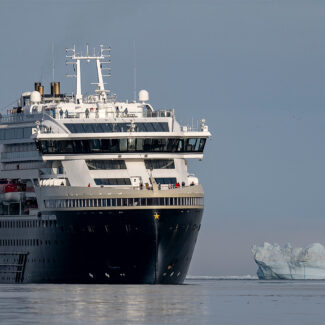The 10 Most Famous Arctic Explorers & Their Incredible Feats
- (1) Martin Frobisher (ca. 1535–1594)
- (2) Henry Hudson (ca. 1565–1611)
- (3) John Franklin (1786–1847)
- (4) Frederick A. Cook (1865–1940)
- (5) Robert Peary (1856–1920)
- (6) Matthew Henson (1866–1955)
- (7) Roald Amundsen (1872–1928)
- (8) Richard E. Byrd (1888-1957)
- (9) Naomi Uemura (1941-1984[?])
- (10) Ann Bancroft (1955–)
- Exploring the Legacy of the Most Famous Explorers of the Arctic
From the perilous labyrinth of the Northwest Passage to the heights of the Greenland Ice Sheet and the farflung sea-ice wilderness of the North Pole, the Arctic—long home, of course, to Native peoples—has beckoned wayfarers and adventurers for centuries. The following, centuries-spanning list compiles 10 of the most famous Arctic explorers in history.
(1) Martin Frobisher (ca. 1535–1594)
The English explorer, mariner, and privateer Martin Frobisher made three consecutive expeditions to the North American Arctic in the late 16th century. The first, in 1576, aimed to find the Northwest Passage, that fabled seaway thought to link the Atlantic and Pacific oceans. This voyage saw Frobisher apparently sight what was later named Resolution Island, near the entrance to Hudson Strait, and venture into what he took to be a strait and which came to be called Frobisher Bay on the southeastern coast of Baffin Island.
On Baffin Island, Frobisher came into conflict with local Inuit, who apparently took five of his men captive; Frobisher apprehended an Inuit man in retaliation and took him back to England, where the man soon died.
A piece of ore Frobisher brought back from that Northwest Passage quest was alleged to contain gold, the search for which then spurred his next two expeditions to the Canadian Arctic in 1577—when he brought other kidnapped Inuit back to England, where, like Frobisher’s first captive, they quickly perished—and in 1578, during which the expedition lost a ship and failed to establish a colony on Baffin Island. The large quantities of ore Frobisher hauled back from these two voyages ended up yielding no precious metals whatsoever.
Honoring an early Arctic voyager! This Canadian stamp commemorates Martin Frobisher, whose pioneering expeditions in the 16th century sought the Northwest Passage and added to the early maps of the Arctic regions.
Source: Martin Frobisher, Public domain, via Wikimedia Commons
(2) Henry Hudson (ca. 1565–1611)
Another English navigator, Henry Hudson made multiple expeditions to the Arctic in search of both the Northwest Passage and its Eurasian analogue, the Northeast Passage.
In 1607, Hudson aimed to sail over the top of the world to reach Asia from England; expecting open water in the vicinity of the North Pole—the so-called “Open Polar Sea” concept in vogue at the time—he instead hit the Arctic Ocean pack ice, which he edged along into the archipelago of Svalbard. He also unsuccessfully attempted the Northeast Passage in 1608 and, the following year, ditched another effort at that route through the Asian Arctic to try for the Northwest Passage via the river in present-day New York later named after him.
In 1610, Hudson sailed forth on the Discovery in another attempt to trace the Northwest Passage, this time via what became known as Hudson Strait, explored some years before by his countryman George Weymouth. It took weeks for the Discovery to traverse the ice-clogged waterway. Hudson named a number of geographic features along the way, including Cape Wolstenholme (the northernmost tip of Quebec’s Ungava Peninsula), Cape Digges (on Digges Island), and Digges Sound, these for expedition backers.
Via Hudson Strait and Digges Sound, the Discovery reached what became known as Hudson Bay, but failed to find an outlet to the Northwest Passage from that great inland sea. After a winter in Hudson Bay, some of the crew—riled up by Hudson’s intent to continue seeking a route out of the bay—staged a mutiny and cast Hudson, along with his son and seven other men, adrift in a small boat called a shallop. Their fate is lost to history. (Robert Bylot would end up captaining the Discovery back home to England, though numerous crew members—including the main instigators of the mutiny—died en route.)
Charting new waters! This early map, referencing “Hudson’s Bay,” illustrates the explorations of Henry Hudson, whose voyages significantly contributed to the mapping and understanding of the Arctic and the waterways of northeastern North America.
Source: Jeangagnon, Public domain, via Wikimedia Commons
(3) John Franklin (1786–1847)
Sir John Franklin is best known for his disastrous 1845 search for the Northwest Passage: an expedition that ended with the loss of its entire crew, Franklin included, in what apparently became a protracted ordeal of starvation and even cannibalism. This lost voyage, the fate of which gripped England and prompted more than a dozen search parties into the Canadian High Arctic, is one of the most infamous chapters of polar-exploration history (and you can read all about it here in this article).
Despite the grim fate of that 1845 Erebus and Terror expedition, Franklin did make large contributions to scientific knowledge of the North American Arctic. Having commanded one of the ships on Captain David Bucham’s 1818 expedition aimed at the North Pole, Franklin himself led an 1819-1822 overland exploration from Hudson Bay to the Arctic Ocean and along its margin: a journey that resulted in his publication, in 1823, of Narrative of a Journey to the Shores of the Polar Sea, in the Years 1819, 20, 21 & 22. And from 1825 to 1827, Franklin helmed another expedition that explored the Arctic seashore in either direction of the mouth of Canada’s mighty Mackenzie River, logging more than 1,000 miles (1,609 kilometers) of previously uncharted coastline (and producing a second chronicle published in 1828).
Franklin named a number of Arctic features, including Coronation Gulf, and has several official toponyms in the region honoring him, including Franklin Strait between the Boothia Peninsula and Prince of Wales Island.
The relentless quest for answers! This dramatic painting, “The Search for Sir John Franklin in the Arctic,” captures the arduous and often perilous efforts undertaken to discover the fate of his lost expedition.
Source: François Musin, Public domain, via Wikimedia Commons
(4) Frederick A. Cook (1865–1940)
The American physician Frederick A. Cook was seduced by polar exploration on the heels of graduating from the New York University Medical School and tragically losing his wife during childbirth. He volunteered as doctor for an 1891 expedition to Greenland led by the explorer Robert Peary, with whom, years later, Cook’s name would become inextricably linked. He also accompanied the 1897 Belgian Antarctic Expedition, during which he provided invaluable medical care (not least in warding off scurvy during a long Antarctic winter).
The following decade—not long after making a controversial (and now widely rejected) claim of making the inaugural ascent of North America’s tallest mountain, Denali—Cook again traveled to Greenland and then made a bold push to be the first at the North Pole. Leaving the hunting outpost of Annoatok in February 1908, Cook proceeded northward with two Inuit crew-mates—Ahwelah and Etukishook—and, he asserted, reached the Pole on April 2nd.
You can read more about Cook’s drawn-out homeward journey, which overlapped with Peary’s own voyage for the Pole, and the ensuing controversy, which pitted the two explorers and their supporters against each other and lingers to this day, in our article, “Who Was the First Person to Reach the North Pole, Really?”
Setting sail for the Pole? This image shows Frederick Cook with his expedition members aboard the “Hans Egede” during his controversial 1909 attempt to reach the North Pole, the details of which are mapped out beside them.
Source: Arnold Heim, Zürich, CC BY-SA 4.0 <https://creativecommons.org/licenses/by-sa/4.0>, via Wikimedia Commons
(5) Robert Peary (1856–1920)
Of Frederick Cook’s and Robert Peary’s competing and much-doubted claims of being the first at the North Pole, Peary’s is generally considered the stronger. Nonetheless, many experts conclude neither man’s party actually reached the spot. Some convincing analysis, however, suggests that Peary and his companions—which included a long-time colleague of his, Matthew Henson (more on him shortly)—may have come quite close to the North Pole: maybe within a few dozen—or even just a few—miles of it.
Peary’s account puts him and his party at the North Pole on April 6, 1909—in other words, about a year after Cook contended he reached it. That 1908-1909 expedition was the third of Peary’s attempts on the North Pole and the final of numerous Arctic trips he led. A U.S. Navy officer, Peary first journeyed to the Arctic in 1886, when he trekked onto the Greenland Ice Sheet. In the 1890s and early 1900s, he ran several expeditions into the Arctic, including to Ellesmere Island (one of the potential starting points he considered for routes to the Pole) and to Greenland, from where, notably, he hauled back large fragments of the Cape York Meteorite and brought a number of local Inuit to the United States, where most succumbed to tuberculosis. (It must be emphasized that Peary’s track record with the indigenous peoples of the Arctic is a dismal one.)
Peary, who named such Arctic features as Greenland’s Independence Fjord, had numerous locations named after him. These include Peary Land and Peary Glacier in Greenland and the Peary Bay and Channel in Nunavut, Canada. A mountain in Antarctica also bears his name, as does a topographic feature beyond Earth: a lunar impact crater close to the Moon’s north pole.
Mapping his Arctic ambitions! This section of Robert Peary’s 1903 “Polar Regions” map illustrates his detailed explorations, showcasing the routes and geographical discoveries that fueled his pursuit of the North Pole.
Source: Robert E. Peary, Public domain, via Wikimedia Commons
(6) Matthew Henson (1866–1955)
Matthew Henson was Robert Peary’s right-hand man on many of the latter’s Arctic expeditions. An African-American, Henson was born to a sharecropping family a year after the American Civil War ended. Orphaned as a child, he ended up on the crew of a number of sailing expeditions—experience which appealed to Peary, who first encountered Henson in 1887 working as a clerk in a Washington, D.C. shop where Peary had stopped to peddle walrus and seal hides.
Peary hired him—and soon came to regard him as absolutely essential as an expedition member. The skillful Henson built sledges for Peary’s trips and became proficient in Inuit languages. And on that April day in 1909 when Peary maintained he, Henson, and four Inuit companions reached the North Pole, it was Henson who made the initial footfalls there. “I was in the lead that had overshot the mark by a couple of miles,” Henson told a newspaper upon the expedition’s return. “We went back then and I could see that my footprints were the first at the spot.”
This fact appeared to grate on Peary, who became rather frosty toward Henson already on the return trek. And, as an African-American man, Henson received far less credit for the alleged feat than Peary, though the party’s North Pole account fell under suspicion not long after rival Cook’s.
Although many doubt Peary’s party actually attained the North Pole, it’s worth noting that, if they did, it was a Black man who was the very first to this remote and long-sought geographic extreme. And even if they didn’t, it seems likely the men did come impressively close—with Henson leading the way.
Henson did eventually earn more official commendation for his role on the expedition, including honorary enrollment in the Explorers Club of New York in 1937.
Recognizing a vital partner! This illustration honors Matthew Henson, whose crucial skills, knowledge, and resilience were indispensable to Peary’s Arctic endeavors, highlighting a key figure in the story of North Pole exploration.
Source: Charles Alston, Public domain, via Wikimedia Commons
(7) Roald Amundsen (1872–1928)
Few polar explorers, if any, can claim the bona fides of the Norwegian Roald Amundsen. He was the first person to successfully traverse the Northwest Passage (on the 1903-1906 voyage of the Gjøa), the first to reach the South Pole (in 1911), and part of the first party to definitively reach the North Pole: on the May 12, 1926 flyover in the airship Norge.
Amundsen also voyaged through the Northeast Passage as part of the Maud Expedition launched in July 1918, thereby becoming—along with compatriot and teammate Helmer Hanssen—the first to successfully transit both the Northwest and the Northeast passages. (Amundsen—who endured a number of close calls on the Maud Expedition, including a polar-bear attack and carbon-monoxide poisoning—originally hoped to drift the ship over the North Pole. It was on this journey that he hatched the alternative idea of flying over the Pole.)
A legend in his own time, Amundsen met his end in the Arctic in heroic fashion: as part of the crew of a lost, presumably crashed, airplane that had been attempting to rescue the survivors of the Italia airship disaster out on the sea ice beyond the Svalbard archipelago.
Along with many Antarctic locations, a number of places in the Arctic bear Amundsen’s name, including the Amundsen Gulf (near the western border of the Canadian Arctic Archipelago and part of the Northwest Passage), Greenland’s Amundsen Land, and the undersea Amundsen Basin, the Arctic Ocean deep that encompasses the North Pole. Like Peary, Amundsen is also namesake to a crater on the Moon: this one near the lunar south pole.
The conqueror of the South Pole! This portrait captures the determined gaze of Roald Amundsen, a legendary Norwegian explorer who successfully led the first expedition to reach the geographic South Pole.
Source: Bain News Service, publisher, Public domain, via Wikimedia Commons
(8) Richard E. Byrd (1888-1957)
A decorated officer of the U.S. Navy and a daring aviator, Richard E. Byrd is chiefly celebrated in the annals of polar history for his multiple groundbreaking expeditions to Antarctica—and for making the first flight to the South Pole, on November 29, 1929. But he’s also part of the saga of Arctic exploration, if a controversial one.
Byrd’s disputed claim to Arctic fame is his alleged May 9, 1926 flight over the North Pole, undertaken just days before Amundsen and the rest of the Norge crew made their firmly accepted flyover. Evidence, including Byrd’s own late-discovered diary, casts strong doubt that the monoplane Byrd and Floyd Bennett flew, the Josephine Ford—plagued by an oil leak during the attempt—actually reached the Pole.
A moment of respite in the frozen south. This image captures Richard E. Byrd during one of his Antarctic expeditions, highlighting the stark conditions and the human element behind his pioneering aerial explorations of the continent.
Source: Photograph by: US Navy, National Science Foundation, Public domain, via Wikimedia Commons
(9) Naomi Uemura (1941-1984[?])
The Japanese adventurer Naomi Uemura racked up some of the most impressive feats of Arctic trekking before his untimely death at age 43, when he disappeared on the climb down from a solo winter ascent of Denali in Alaska. Born and raised in the snowy region of Tajima in Hyōgo Prefecture, Uemura became an accomplished mountaineer and thrill-seeker, achieving the first solo climb of Denali, the first solo rafting odyssey down the Amazon River, and the first ascent by a Japanese person of Mount Everest, among other exploits.
In the late 1970s, Uemura pulled off some spectacular Arctic journeys. In 1976, he journeyed alone by dogsled some 12,000 kilometers (~7,500 miles) from Greenland to Alaska. Two years later, he made the first solo trek to the North Pole, then made the first dogsled north-south traverse of the Greenland Ice Sheet. His endpoint on that trip down the world’s largest island was a pair of ice-piercing pinnacles now called Nunatak Uemura.
Witness the spirit of adventure! This banner marked Naomi Uemura’s incredible solo dogsled expedition to the North Pole, a testament to his unparalleled determination and a truly inspiring feat of polar exploration.
Source: RobertTheRed, CC BY-SA 3.0 <https://creativecommons.org/licenses/by-sa/3.0>, via Wikimedia Commons
(10) Ann Bancroft (1955–)
A native of the wintry U.S. state of Minnesota, Ann Bancroft is another stone-cold legend of modern polar exploration. On the 1986 Steger International Polar Expedition, she became the first woman to reach the North Pole by dogsled and foot. In 1992, she led the first all-woman team to ski east-west across Greenland, then helmed the American Women’s Expedition to Antarctica. That 1992-1993 expedition not only logged the first successful ski journey to the South Pole by women; it also saw Bancroft become the first woman to have reached both of the Earth’s geographic poles.
In 2001, Bancroft and the Norwegian adventurer Liv Arnesen, traveling by boat and skis, became the first women to make a trans-Antarctic crossing.
Among the greatest living polar adventurers, Bancroft continues to lead expeditions around the world—partly to raise awareness about climate change and other environmental issues.
Exploring the Legacy of the Most Famous Explorers of the Arctic
Whether or not you have quite the same thirst for adventure (and glory) as the above famous Arctic explorers, you can experience the scenic, natural, and cultural glories of this beautiful polar realm on an expedition cruise. Peruse possible itineraries right here.
Disclaimer
Our travel guides are for informational purposes only. While we aim to provide accurate and up-to-date information, Antarctica Cruises makes no representations as to the accuracy or completeness of any information in our guides or found by following any link on this site.
Antarctica Cruises cannot and will not accept responsibility for any omissions or inaccuracies, or for any consequences arising therefrom, including any losses, injuries, or damages resulting from the display or use of this information.


